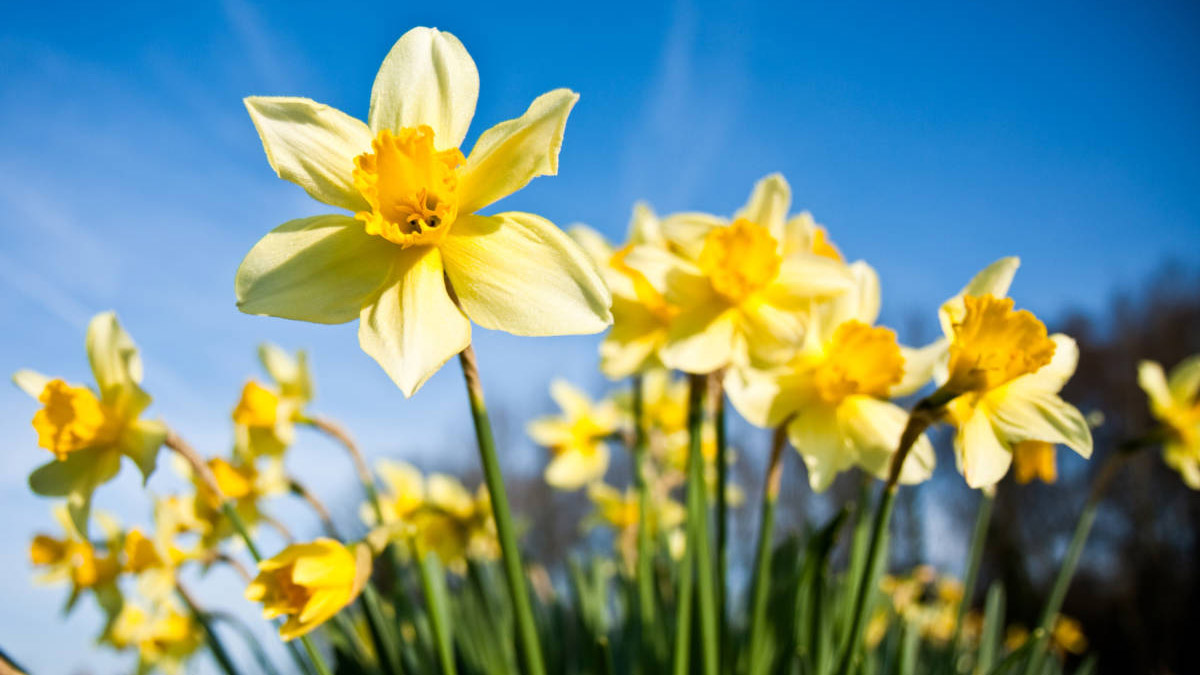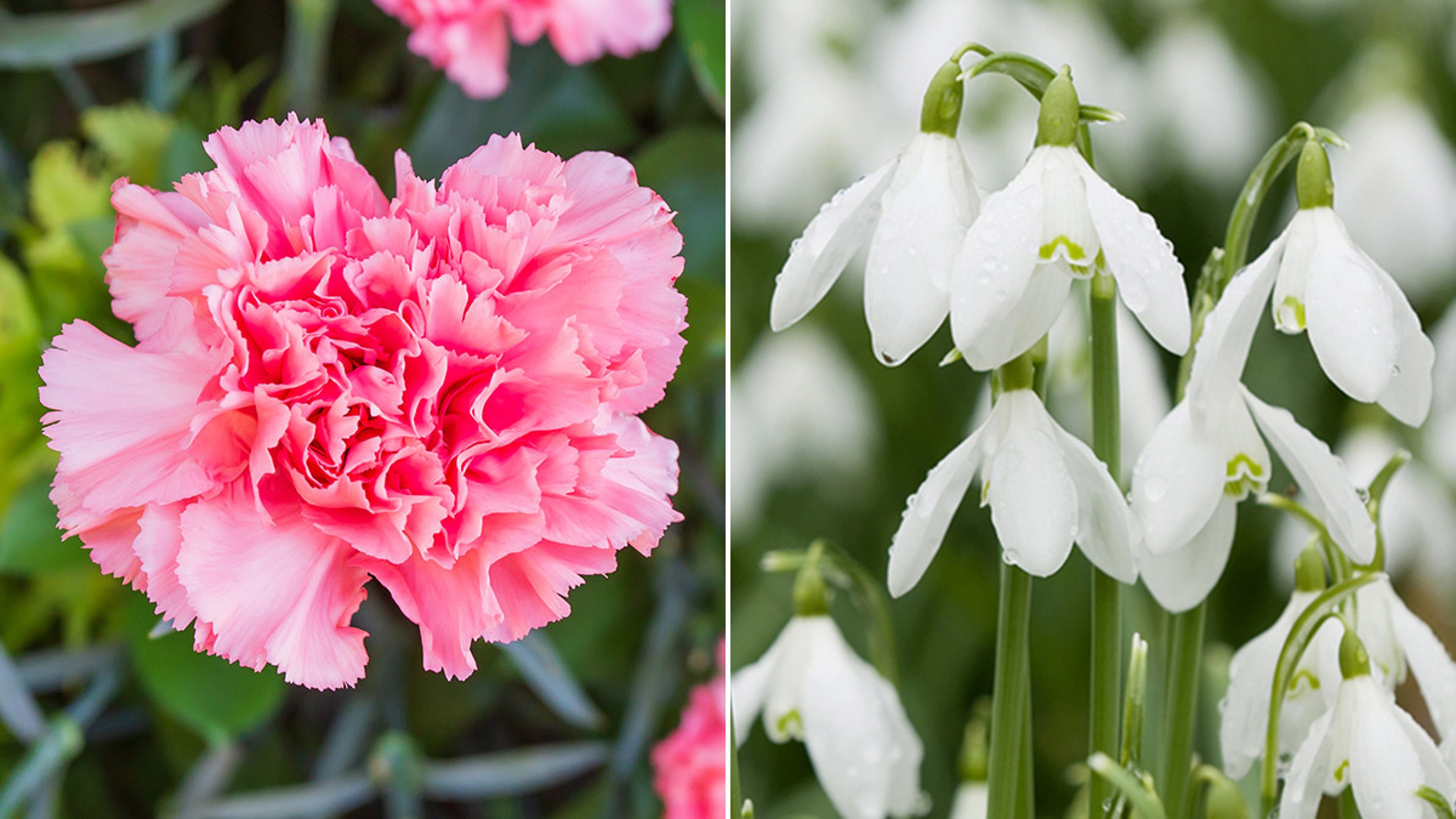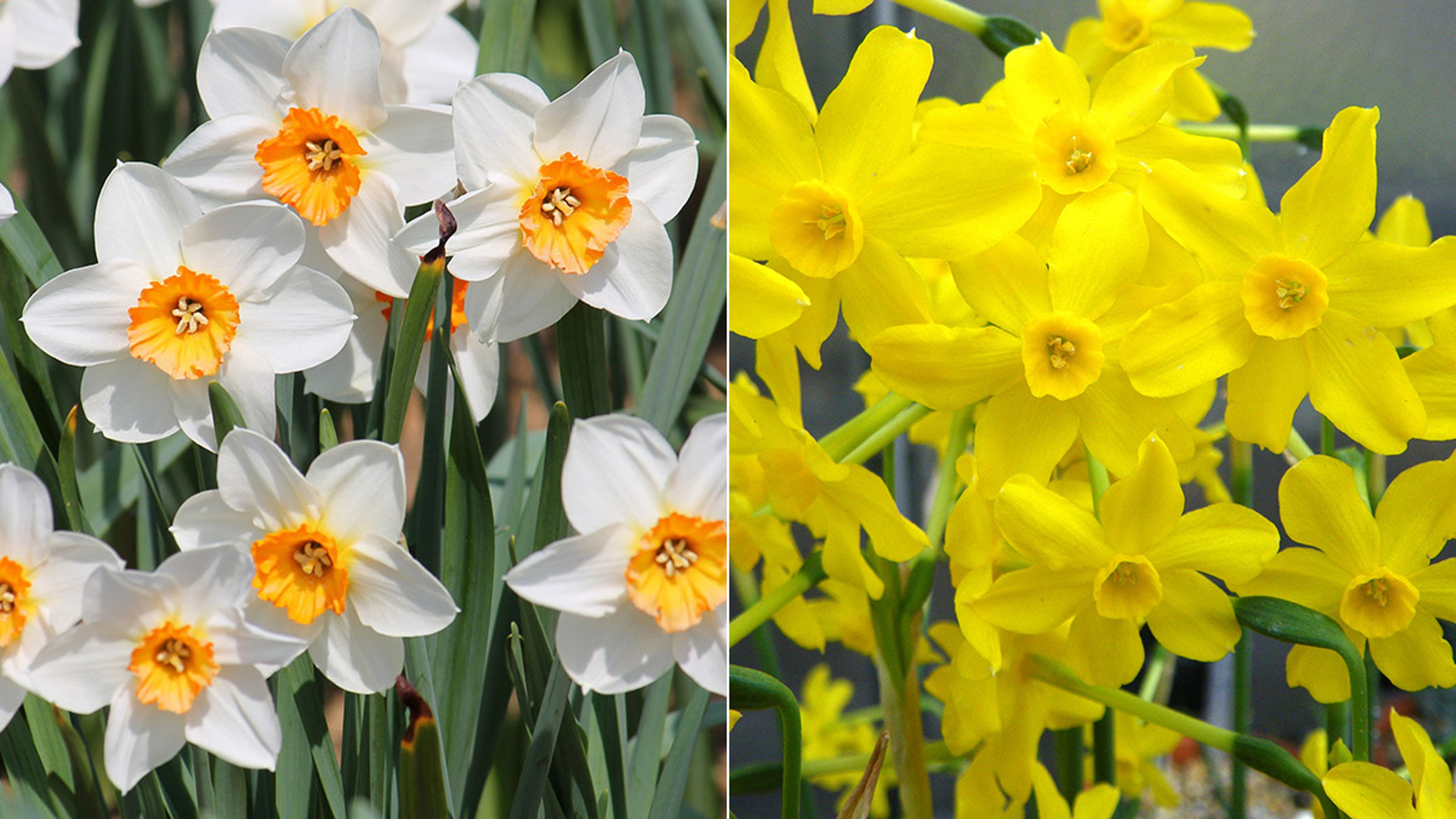March Birth Flowers: All About the Daffodil and Jonquil
If spring has sprung, then it's time for these two cheerful blooms to shine.
Feb 06, 2024
As winter bids us farewell and nature awakens from its slumber, March heralds the arrival of vibrant blooms that breathe life into the world. Among the stars of the early spring garden are two enchanting flowers that symbolize the beauty and renewal associated with this season.
Whether planted outdoors or displayed inside the home, these radiant specimens bring joy and positivity to their surroundings. And with proper care, you can witness these March birth flowers transforming your space into luscious tapestries of color and fragrance.
What are the March birth flowers?
The March birth flowers are the daffodil and jonquil.

Daffodils (Narcissus) are a genus of perennial plants native to Europe and North Africa. One of the most recognizable features of the daffodil is its trumpet-shaped flower. The most common shades of daffodils are yellow and white, but they also come in orange, pink, or bi-colored. While they can produce solitary blooms, daffodils are often seen in clusters. These hardy perennials grow from bulbs, which are planted in the fall and emerge from the ground in the spring.
Jonquils (Narcissus jonquilla) are a specific subgroup within the larger Narcissus genus, which includes various daffodils. The flowers emit a sweet and often intense scent. Like daffodils, jonquils feature trumpet-shaped flowers, typically grow in clusters, sprout from bulbs, and are among the earliest-blooming flowers in spring.
What is the history of daffodils?
Daffodils are believed to have originated in the Mediterranean region; their roots have been traced back to ancient Greece and Rome. The name "narcissus" is derived from Greek mythology: The story goes that Narcissus, a beautiful youth, falls in love with his own reflection and transforms into the flower that now bears his name.
Daffodils gradually spread across Europe, and by the Middle Ages, they had become popular ornamental plants. During the Victorian era, daffodils came to be associated with sentiments of renewal, rebirth, and the promise of a new beginning in floriography.
Daffodils eventually made their way to colonial America, the bulbs being brought over by European settlers who yearned for a reminder of their homeland. Today, daffodils grow almost everywhere in North America, and in many places across the world, and are most commonly found near forests, grasslands, and riverbanks.
What does the daffodil mean?
With their emergence early in the season, daffodils are often associated with the end of winter and the beginning of a new cycle of life. These golden blossoms also convey messages of hope, positivity, and the anticipation of brighter days ahead. Daffodils are hardy perennials that can withstand challenging conditions and, as such, are seen as symbols of resilience, strength, and the ability to overcome adversity.

In modern times, the daffodil has been adopted as a symbol for cancer awareness. The American Cancer Society uses the daffodil to represent hope for a cure and support for individuals affected by cancer.
Daffodils are often associated with the Easter season, symbolizing the resurrection and the joyous celebration of new life. They are commonly used in Easter decorations and floral arrangements.
The daffodil also is the traditional flower for a 10th wedding anniversary.
How to care for daffodils
Caring for daffodils is relatively straightforward, and with proper attention, you can enjoy their cheerful blooms year after year.
- Planting: Plant daffodil bulbs in the fall before the ground freezes, in a location with well-drained soil. Place the bulbs about 6 to 8 inches under the ground, with the pointed end facing upward.
- Sunlight: Daffodils thrive in full to partial sunlight, so plant them in an area that receives at least 6 hours of sunlight per day.
- Watering: Daffodils prefer moderate watering. Water the bulbs well after planting, and water sparingly throughout the growing season.
- Fertilization: Fertilize daffodils in early spring just as the shoots emerge from the soil. Use a balanced fertilizer or one specifically formulated for bulbs.
- Division: Every few years, consider dividing crowded clumps of daffodils. Lift the bulbs after the foliage has withered, separate them, and replant them at the recommended spacing.
- Container care: If growing daffodils in containers, ensure the pots have drainage holes to prevent waterlogging. Use well-draining potting mix, and water as needed.

3 interesting facts about daffodils
- The daffodil is the national flower of Wales, where it is associated with St. David's Day, the national day of Wales. It is worn by people in Wales on this day as a symbol of national pride.
- Daffodils are one of the few flowers that continues to produce a toxin harmful to other flowers even after being cut. This makes them ideal for exclusive arrangements, as they don't play well with other flowers in a vase.
- The poet William Wordsworth immortalized daffodils in his poem "I Wandered Lonely as a Cloud," in which he describes the beauty and impact of encountering a field of blooming daffodils.
What is the history of the jonquil?
The history of Jonquils is intertwined with the broader history of the Narcissus genus. Jonquils, specifically, are believed to have originated in the Mediterranean region, particularly in Spain and Portugal. The name "jonquil" is derived from the Spanish term "jonquillo," which refers to the rush-like leaves of the plant.
What does the jonquil mean?
The bright and vibrant jonquil is often seen as a symbol of joy and cheerfulness, and its sweet fragrance is often linked to themes of love and romance.
Otherwise, jonquils represent much the same things as daffodils: the anticipation of the changing seasons, renewal and rejuvenation, and the resurrection and joyous spirit of Easter.
How to care for jonquils

- Planting: Plant jonquil bulbs in the fall, preferably 4 to 6 weeks before the first hard frost. Choose a well-drained location that receives partial to full sunlight.
- Soil conditions: Jonquils prefer well-drained soil with a slightly acidic to neutral pH.
- Bulb depth: Plant jonquil bulbs at a depth of about 4 to 6 inches, placing them pointy side up. Space the bulbs approximately 4 to 6 inches apart.
- Watering: Provide regular watering during the growing season, especially in the spring. Keep the soil consistently moist but not waterlogged. Reduce watering after flowering, and allow the soil to dry out as the foliage dies back.
- Fertilization: Fertilize jonquils in early spring when the shoots emerge from the ground. Use a balanced fertilizer or one specifically formulated for bulbs.
- Foliage: Allow the foliage to die back naturally. Do not tie or cut back the foliage until it turns yellow.
3 interesting facts about jonquils
- The essential oil derived from jonquil flowers is referred to as "the perfume of the soul." It is used in perfumery for its sweet and uplifting scent.
- There is a superstition that if you point at a jonquil, it will not grow.
- While daffodils are found in many colors, jonquils come only in yellow.



















